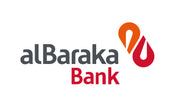SECTIONAL TITLE OWNERSHIP: UNDERSTANDING THE BASICS
Laila Cassim | Conveyancing Supervisor

In the vibrant landscape of South African real estate, a popular phenomenon has captivated the hearts of property seekers and investors alike. It’s the allure of sectional title living, a concept that blends individual ownership with communal harmony.
The popularity of sectional title living is due to several reasons, including heightened security, affordability and functional benefits of shared expenses among fellow homeowners, whilst enjoying the fruits of the common property usually boasting verdant gardens, sparkling pools, and communal entertainment areas.
But beyond the picturesque facade lies a labyrinth of rules, rights, and responsibilities that every sectional title owner must navigate.
In this article, we delve into the intricacies of sectional title schemes, their rules, and probe into the understanding of shared personal space through collective cohesion
ARE SECTIONAL TITLE PROPERTY GOVERNED?
- The Sectional Titles Act 95 of 1986 replaced the Sectional Titles Act 66 of 1971 and came into operation on 1 June 1988
- The Sectional Titles Schemes Management Act 8 of 2011 came into operation on 7 October 2016
- The Community Schemes Ombud Service Act 9 of 2011 also came into operation on 7 October 2016
These legislations outline the rights and responsibilities of sectional title owners, the establishment and management of sectional title schemes, dispute resolution mechanisms, and the role of managing agents and trustees.
WHAT IS A SECTIONAL TITLE SCHEME?
A sectional title scheme comprises of three elements namely:
- owners’ sections,
- exclusive use areas; and
- common property.
A Sectional Title Scheme provides for the division of buildings into sections and common property and for the acquisition of separate ownership in sections coupled with joint ownership in common property. These schemes fall under the control of the Sectional Titles Act.
WHAT DOES A SECTIONAL TITLE OWNER ACTUALLY OWN?
A sectional title owner owns a “unit” in the sectional title scheme. A unit consists of a section (such as a flat or townhouse) and an undivided share (or percentage) of the common property i.e. areas that are shared and used by everyone. Some parts of the common property can also be designated as exclusive use areas, which means that just one owner or group of owners can use them (for example, parking bays or private garden areas).
WHAT IS THE COMMON PROPERTY?
All the parts of the sectional title scheme that are not part of sections are referred to as the common property. This comprises of the areas which are utilised by all owners, e.g. like the gardens, the driveways, roads, corridors, staircases, lifts, recreational facilities, the
entrance area and the outside of the building. Sectional title owners own their section as well as an undivided share (or percentage) of the common property. The body corporate controls the common property.
WHAT ARE EXCLUSIVE USE AREAS?
Parts of the common property, e.g. a parking bay or garden area, may be delineated as an exclusive use area and the right to the exclusive use of such area may then be conferred on an owner of a section. An exclusive use right gives the owner or occupier of the unit the right to use and enjoy a specific part of the common property to the exclusion of all other owners and occupiers. Exclusive use rights can be acquired and held in terms of the rules applicable to the Scheme or by way of Notarial Cession.
WHY ARE LEVIES PAYABLE?
A levy is a monthly payment that all of the owners in the sectional title scheme must pay. Levies comprises all the anticipated costs of the running of the Scheme and usually includes:
- Rates and Taxes payable to local authority by the Scheme if the units are not separately rated;
- Water;
- Electricity and repair costs relating to any electrical installation on the common property;
- Insurance in respect of buildings in the Scheme;
- Managing agent fees;
- Annual audit fees; and
- Security and maintenance costs.
The levy may also include a certain amount for expected future expenses. This would be the case where the body corporate may have a big expense in the future that would be too expensive for the owners to pay for when the expense arises e.g. the replacement of a lift.
Levies are usually set for a year, but may be changed in exceptional cases.
WHAT IS A SPECIAL LEVY?
If insufficient funds are available for maintenance and/or improvements or unforeseen, necessary expenses becomes payable, a special levy may be raised by the Body Corporate.
This is another levy that may be a once off levy or for a set period.
Now that you understand the key concepts and principles, covering the basics of what a sectional title scheme is, look forward to our next issue where we will be covering the various role players that are associated with a Sectional scheme, their functions and services.
For further details or advice in this regard, it is best that you consult with a Legal Practitioner.
